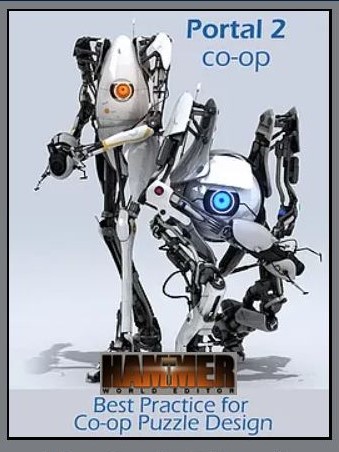Best Practice for Co-op Puzzle Design
A Masters' Thesis Topic, A set of Portal 2 co-op levels
3 Co-op Design Patterns
Pattern 1: Serialization
Players operating one or more objects IN A CERTAIN ORDER that could not be operated by a single player alone.
Pattern 2: Parallelization
Players operating one or more objects SIMULTANEOUSLY that could not be operated by a single player alone.

Pattern 3: Seperation
Forcing the players to SPLIT UPand pushing them to go ahead without any physical teammates nearby.
4 Stage Co-op Puzzle Design Theory
STEP1: Create serialization gameplay.
- Divide the puzzles into chunks and make them impossible for one player.
- Set clear goals and objectives.
STEP2: Use spaces and tasks to create multiple gameplay.
- Separate tasks to create parallelization gameplay, it requires the players to communicate well.
- Separate spaces to create separation gameplay, it requires the players to share information well.
STEP3: Design "wow" moments.
- Create puzzle catches in serialization gameplay.
- Add puzzle challenges in parallelization gameplay.
- Design reunion moments after players being separated for a period.
STEP4: Balance the gaming experience.
- Split tasks for both players, do not let the players wait.
- Split information for both players.
- Have engaging cooperative tasks for the players.
Co-op Puzzle Design Golden Rules
- Having fun is more important than the puzzle itself.
- Multiple design patterns provide gameplay in different ways, however, it's not always required.
- Communication /Information sharing is always important regardless of what gaming style it is.
- Players don’t like waiting when their partner is operating with objects.
- Serialization design pattern and separation designing pattern have advantages in increasing game difficulties.
- Parallelization design pattern have advantages in increasing fun.
- Setting clear goals when design serialization and separation puzzles is a key to success.
- Moderate hardness to parallelization challenges is another key to success.
